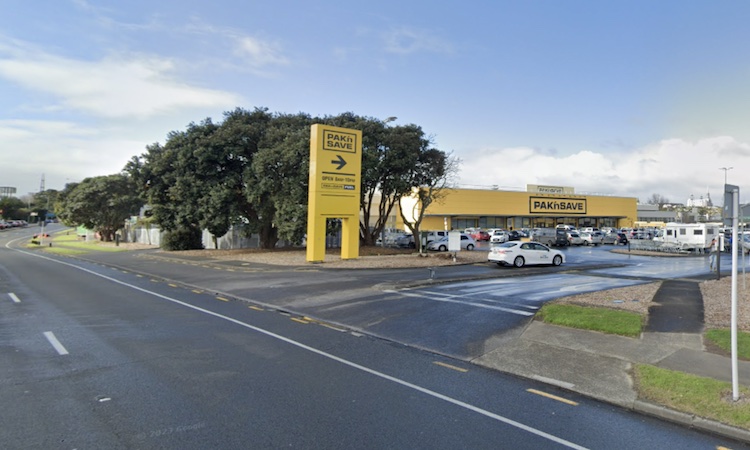
The Privacy Commissioner has concluded that the live FRT model trialled by Foodstuffs North Island is compliant with the Privacy Act, but New Zealanders remain uncomfortable with the use of the technology by retailers, writes Nicholas Dynon.
It’s been an interesting few weeks for observers of facial recognition and privacy in Aotearoa, if not a little confusing.
On 04 June, Privacy Commissioner Michael Webster released his finding that the live facial recognition technology (FRT) trialled by Foodstuffs North Island (FSNI) in 25 of its supermarkets is compliant with the Privacy Act.
The 74-page inquiry report provided reasonable detail relating to the finding, listing the privacy safeguards put in place during the trial that reduced the privacy risks of the FRT deployment to “an acceptable level”. It also identified improvements that would need to be made before deployment of the technology by FSNI can be made permanent or expanded.
It’s a big win for FSNI and for various organisations championing the use of FRT in retail, including Retail NZ, members of the Ministerial Advisory Group (MAG) for Victims of Retail Crime, and advocates of the tech among security vendors and service providers.
It’s also an outcome welcomed by Justice Minister Paul Goldsmith, who lauded the result of the Privacy Commissioner’s report as “great news” and now expects the MAG to “continue to look at this technology as an option to be used more widely”.
“Not even the intense problematisation of retail crime by our political leaders, the media, and lobby groups has done much to sway the New Zealand public towards widespread acceptance of having their facial biometrics being read when entering their local supermarket.”
Yet it’s not such great news for the 41% of New Zealanders canvassed in a survey published by the Office of the Privacy Commissioner (OPC) just three weeks previously who stated that they are ‘concerned’ or ‘very concerned’ about the use of FRT in retail stores to identify individuals.
Ironically, the OPC has crunched the legislative data on the supermarket trial and found it to be compliant, yet it’s also crunched the public sentiment around retail FRT and found it to be unequivocally deficient.
So, although it may be legal, is FRT in retail stores something that New Zealanders actually support?
OPC privacy survey reveals massive misgivings
The survey of over 1,200 New Zealanders found that 41% of respondents are ‘concerned’ or ‘very concerned’ about the use of facial recognition technology (FRT) in retail stores to identify individuals. A total of 25% are neutral on the topic, 31% are either not so concerned or not concerned at all, and 3% are unsure. 49% of Maori respondents indicated concern over FRT in retail.
Removing the responses of respondents who were either unsure or uncommitted (neutral) in relation to their thoughts on FRT in retail, the results indicate a significantly higher proportion of respondents are concerned about the use of the technology in retail (41%) compared to those who are not (31%).
For comparison, in last year’s survey, 49% of respondents stated that they were concerned or very concerned about the use of facial recognition technology in retail stores. 22% were neutral, 25% were either not concerned or not really concerned, and 11% were unsure. Those aged 30-44 were more likely to express concern about retail use of facial recognition (55%), and women and Maori were more likely to say they were concerned.
“Like other comparable jurisdictions, the available statistics indicate that the New Zealand public remains divided in relation to their acceptance of FRT generally and the deployment of FRT by retailers in particular.”
These headline figures indicate a marginal decline in concern over the past year, but without understanding the underlying data or survey framing, it is not possible to confidently draw insights from this.
What insight we can confidently draw from both surveys is that the proportion of New Zealanders concerned about the use of FRT in retail is significantly greater than the proportion who are not.

OPC and Foodstuffs data contradictory
This year’s OPC survey results come six months after the results of a survey commissioned specifically by FSNI to gauge public support of its 25-store trial.
As part of the trial, the supermarket cooperative commissioned the survey to gauge how “New Zealand consumers feel about the use of facial recognition (FR) in retail settings”. Among its results, the survey claimed that 66% of respondents were accepting of the use of FRT, “even if the impact it has on reducing harm from incidents of retail crime is minimal.”
Conducted on behalf of FSNI by branding and consumer insights consultancy One Picture, the survey of 1,007 shoppers also found that 79% of respondents would accept the use of FRT even if it only achieved a 0.7% reduction in harm, 86% would accept it if it achieved a 3% reduction in harm, and a staggering 89% would accept FRT if it achieved a 10% reduction in harm.
As I wrote last December, these results wildly contradicted the results of the survey conducted by the OPC earlier in 2024, and they were also inconsistent with established international data on FRT public acceptability published in several peer-reviewed survey-based academic research studies.
The results now also contradict the findings of the OPC’s latest survey.

Social licence for FRT in retail remains low
Like other comparable jurisdictions, the available statistics indicate that the New Zealand public remains divided in relation to their acceptance of FRT generally and the deployment of FRT by retailers in particular.
While the Foodstuffs trial and the media around it is likely to have contributed to raising the public profile in New Zealand of FRT in retail and perhaps contributed in some part to differences between the 2024 and 2025 OPC survey results, it nevertheless does not appear to have shifted the public support dial in favour of FRT in stores.
On the contrary, despite FSNI’s contention that FRT in supermarkets “has strong public support”, the OPC’s most recent findings indicate the clear absence of widespread public support for FRT in retail.
The 25-store trial does not appear to have convinced New Zealanders generally of the value of offering up their biometric privacy so that retailers can derive loss prevention and security efficiencies via FRT.
Not even the intense problematisation of retail crime by our political leaders, the media, and lobby groups has done much to sway the New Zealand public towards widespread acceptance of having their facial biometrics being read when entering their local supermarket.
In the meantime, FSNI has reported winning two categories at the 2025 New Zealand Retail Risk Fraud Awards “for its work trialling facial recognition and its commitment to crime prevention, staff safety, and working with law enforcement.”
The awards, which took place in Auckland in March, are organised by international retail events company Retail Risk, which organises events that are free for retailers and paid for by sponsor/exhibitor vendors, which include providers of facial recognition solutions.
Given the impressive developments in facial recognition technologies in recent years, no one should reasonably doubt its efficacy. It is extremely good at identifying potential matches for the purposes of loss prevention and other security-oriented applications. It is simply great tech. It is, in a word, revolutionary.
And now retailers have been given confidence that it can be compliant with privacy legislation – if they deploy it correctly. Effective, absolutely. Legal, yes. But as the OPC’s own data makes clear, surveyed public sentiment suggests that FRT in retail is a long way from being acceptable.










Be the first to comment